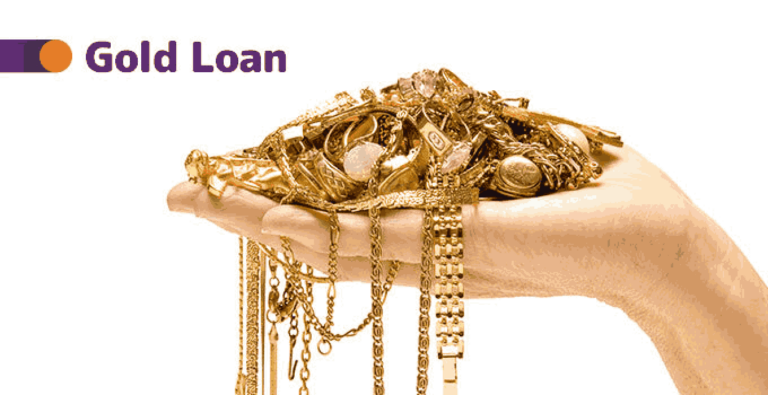
Table of Content
In a world where financial needs are as diverse as the people seeking them, loans have emerged as a bridge to fulfilling aspirations. Gold loans, in particular, have gained immense popularity due to their secured nature and quick disbursal. If you’ve ever wondered about a Rs 1 lakh gold loan interest, you’re in the right place. Let’s delve into the fascinating world of gold loans and demystify the interest rates that govern them.
A gold loan is a financial product where you pledge your gold ornaments, coins, or bars as collateral to obtain a loan from a financial institution. The loan’s value is determined by the gold you pledge. This makes it an attractive option for individuals who possess gold assets but need immediate funds. The convenience and speed of availing a gold loan have contributed to its increasing popularity among various segments of society.
One of the essential aspects of any loan is the interest rate. In the context of a gold loan, the interest rate refers to the cost you incur for borrowing a certain amount against the value of your gold. The interest rate can vary widely based on factors like lender, the loan amount, the loan tenure, and prevailing market conditions. It’s crucial to understand the different types of interest rates before proceeding with a gold loan:
In this method, the interest is calculated on the initial principal throughout the tenure of the loan. While the EMI (Equated Monthly Installment) remains constant, a larger portion of it goes towards interest payment during the early months.
This is the more commonly used method, where the interest is calculated on the outstanding balance, which declines with each payment towards the principal. As the principal decreases, the interest component also decreases over time.
Gold loan interest rates can typically range from 8% to 24% or even higher, depending on the lender and prevailing economic conditions. However, for a Rs 1 lakh gold loan, the interest rate usually falls within this spectrum’s lower to middle range. It’s important to note that while the interest rate is a crucial factor, it’s not the only one to consider when opting for a gold loan.
LTV ratio is the percentage of the gold’s value that the lender is willing to provide as a loan. Generally, the higher the LTV, the higher the interest rate might be. This is because a higher LTV increases the lender’s risk.
Shorter loan tenures might attract slightly lower interest rates compared to longer ones. This is because longer tenures expose the lender to more significant uncertainties, and thus they might adjust the interest rate accordingly.
Fluctuations in the gold market can influence interest rates. Lenders might offer better interest rates when gold prices are stable or rising. Conversely, interest rates might be adjusted during volatile market conditions to mitigate risks.
Each lender might have its own policies and risk assessment criteria, which can impact the interest rate offered. It’s advisable to compare rates from different lenders before making a decision.
Let’s illustrate the interest calculation for a Rs 1 lakh gold loan with a reducing balance interest rate. Suppose the lender offers an interest rate of 12% per annum for a loan tenure of 12 months.
Interest for the first month = (Principal × Interest Rate) / 12 months = (Rs 1,00,000 × 0.12) / 12 = Rs 1,000
For the second month, the interest is calculated on the remaining principal after deducting the first month’s payment from the initial principal:
Remaining Principal after 1st month = Rs 1,00,000 – Rs 1,000 = Rs 99,000 Interest for the second month = (Remaining Principal × Interest Rate) / 12 months = (Rs 99,000 × 0.12) / 12 = Rs 990
Similarly, the interest for subsequent months is calculated in the same manner. As the principal decreases with each payment, the interest amount also decreases over time.
Different lenders offer varying interest rates and terms. Research and compare lenders to find the one that suits your needs.
Read the fine print carefully. Understand any processing fees, prepayment charges, and other terms associated with the loan.
Opt for a loan tenure that aligns with your repayment capabilities. Shorter tenures might have slightly lower interest rates.
Don’t hesitate to negotiate the interest rate with the lender, especially if you have a good credit history or a long-standing relationship.
Keep an eye on the gold market trends. If gold prices are expected to rise, it might be a good time to avail a gold loan.
Gold loans have become a valuable financial tool for those seeking immediate funds while leveraging their gold assets. When considering a Rs 1 lakh gold loan, the interest rate plays a crucial role in determining the overall cost of borrowing. By learning the factors that influence interest rates and being mindful of the terms and conditions, you can make an informed decision that aligns with your financial goals.
Remember, while interest rates are vital, a holistic view of the loan’s terms is essential for a successful borrowing experience.
Invest wise with Expert advice
![]() IIFL Customer Care Number
IIFL Customer Care Number
(Gold/NCD/NBFC/Insurance/NPS)
1860-267-3000 / 7039-050-000
![]() IIFL Capital Services Support WhatsApp Number
IIFL Capital Services Support WhatsApp Number
+91 9892691696
IIFL Securities Limited - Stock Broker SEBI Regn. No: INZ000164132, PMS SEBI Regn. No: INP000002213,IA SEBI Regn. No: INA000000623, SEBI RA Regn. No: INH000000248
ARN NO : 47791 (AMFI Registered Mutual Fund Distributor)

This Certificate Demonstrates That IIFL As An Organization Has Defined And Put In Place Best-Practice Information Security Processes.